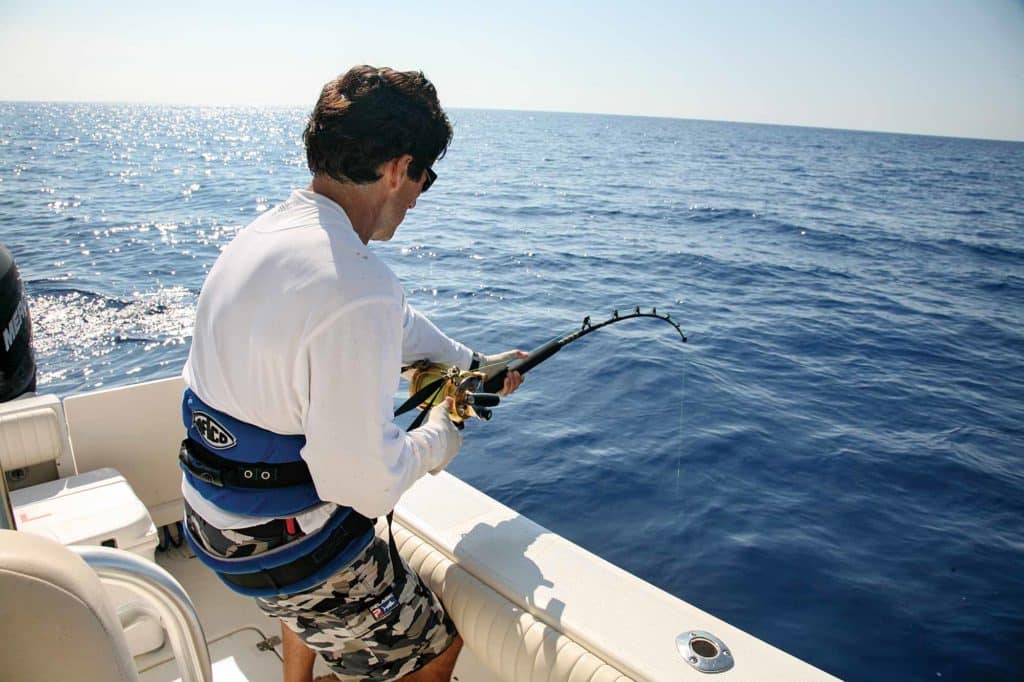
Scoring trophy fish is the direct result of having learned the habits, migrations and idiosyncrasies of your target. Yet acquiring such knowledge is only half the formula: One still has to fight the fish. Fall short on skills here and you’re left with some version of the one that got away. Practice these key tactics and you’ll react accordingly when faced with pivotal situations during every fish fight.
It’s disheartening when half your reel’s spool is still empty and progress is measured in increments of a foot or two of line gained through hard pumping and winding. But as long as line is being reclaimed, no matter how little, you shouldn’t increase the drag or begin horsing the fish in an attempt to gain line more quickly.
Composure and rhythm eventually beat a tough fish, so stay focused, no matter how tiring the fight becomes. Should a bit more drag be warranted, simply cup the spool, or press the line against the rod’s soft foregrip. That way, if the fish suddenly charges off, you can instantly release the added pressure.
Keep the Boat Moving When Trolling
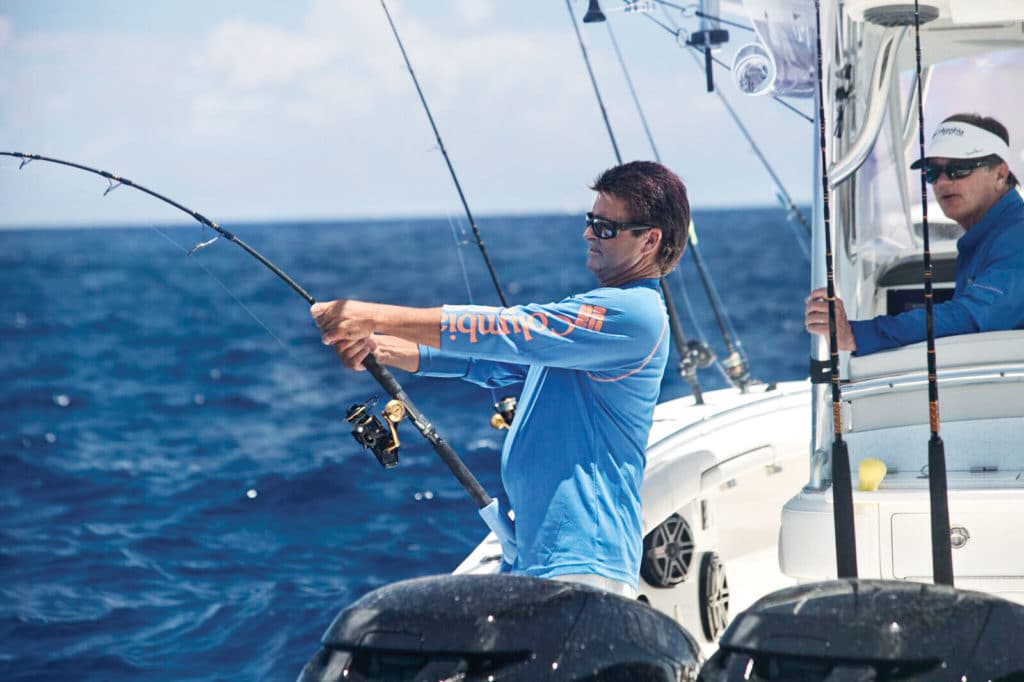
Keep Moving
A common trolling mistake of slowing or stopping the boat after hooking up is a bad practice. Doing so impedes solid hookups, and as the rest of the baits cease to splash and swim, so do the chances for double or multiple hookups.
On the strike, keep the boat heading in the same direction, and maintain the same speed for about 30 seconds before pulling back on the throttles. The boat’s forward momentum and the fish running in an opposite direction should take most of the stretch out of the monofilament line; this results in a firmer hookset. Also, the rest of the spread remains active and vulnerable to a second or third fish.
Don’t Mess with Drag Pressure
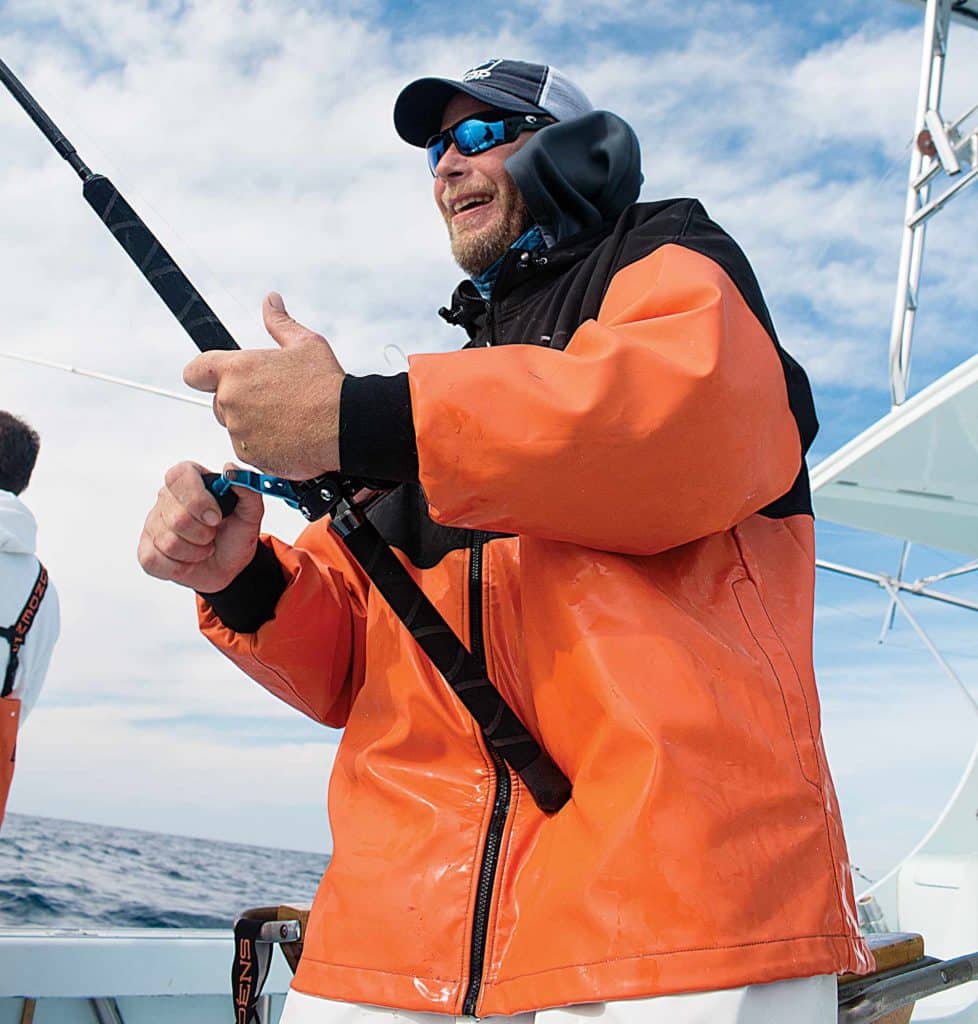
Avoid Increasing Drag
Advancing the drag to stop a hard-charging fish inevitably results in either a snapped line, or a pulled or straightened hook. As the diameter of line on the spool shrinks, drag pressure increases. In addition, the increasing amount of line dragging through the water generates extra pressure. Therefore, on a long-running fish, you should slowly decrease the drag to offset increments resulting from a shrinking spool diameter and excess line drag. Don’t worry, there will be enough pressure on the line to keep proper tension on the fish.
When the line on the spool nears the halfway point, give chase and close the gap. Keeping the fight confined within a third of the line’s capacity enables you to apply plenty of pressure and allows the fish to run and tire itself.
Secure a poly ball or fender to the end of the rode when at anchor. If a hooked fish keeps trucking toward the horizon, toss the float over the side and follow. Then return to the spot after the catch, reclaim the float and anchor rode, and go back to fishing.
Fish Lost at the Boat
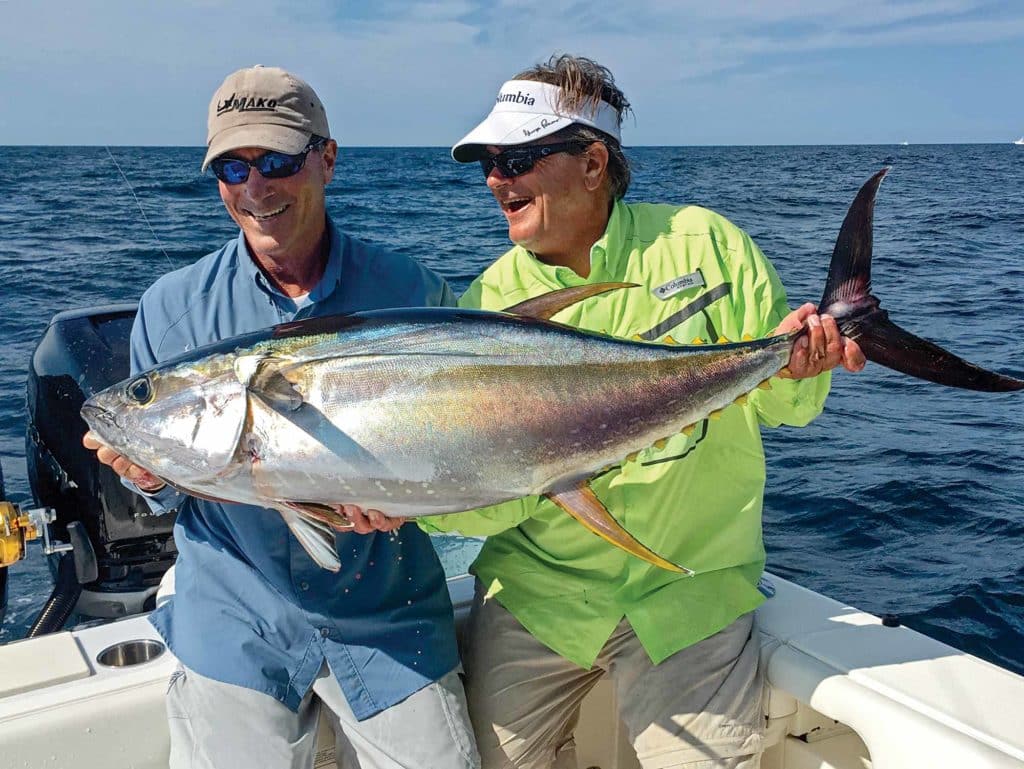
Stay Cool
Fish are most often lost at the beginning and the end of the fight, so don’t get anxious when leading a fish to the net or gaff. Applying additional pressure to finish the job sooner is likely to change the fight rhythm. And even a slight change in rhythm may spook a fish into charging forward, creating slack and shaking off the hook.
The endgame is all about remaining calm and focused. Maintain your rhythm and pressure. The helmsman can assist by holding the boat in a straight line and occasionally shifting in and out of gear. This slight forward momentum helps anglers maintain their rhythm while also keeps fish away from the motors and hull. Once the fish is subdued, you can relax and celebrate.
Anticipate the Fish’s Movements
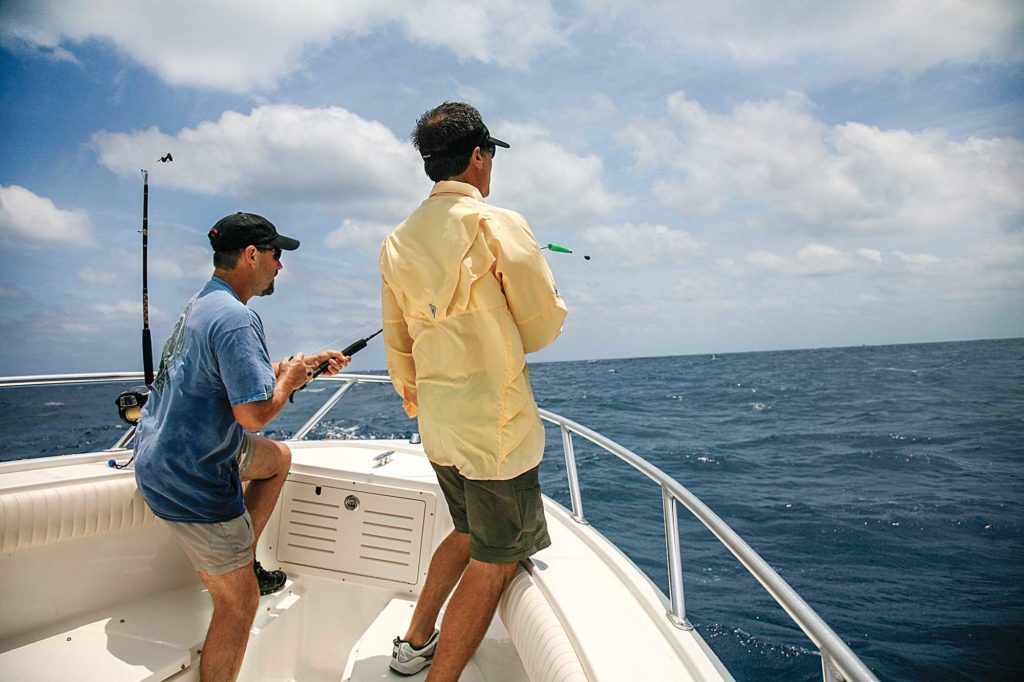
Think Ahead
A good angler remains always in tune with a hooked fish. An outstanding angler anticipates every possible move the fish may try to get free. Consider all the scenarios where a fish could earn its freedom, and mind bridge pilings, deep wrecks and boats, including your own. When hooked up, concentrate on the fight and be ready to counter every move. Always know the fish’s whereabouts and how much line is out.
Should the fish run toward the bow when anchored, a split-second decision may be required to avoid the anchor rode. If the fish darts between the boat and rode, quickly pass your rod underneath the rode. If the fish passes beyond the rode, pass the rod over it instead.
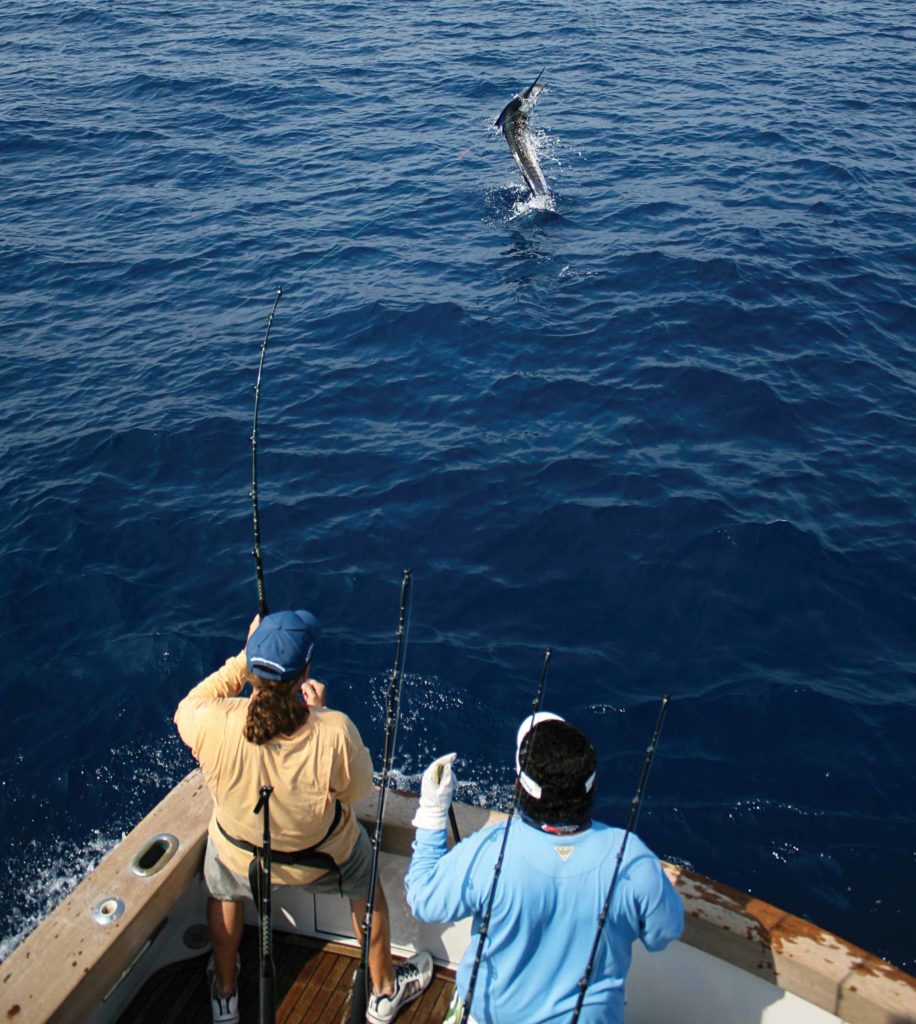
Stand Straight
Too many anglers rear back on an airborne sailfish or tarpon. Perhaps they believe it’s an ideal opportunity to horse the fish toward the boat while it’s out of its element. Whatever the reasoning, that’s a great way to lose the fish. The surge a fish generates when it launches itself out of the water, coupled with violent head shakes, results in rapid and intense shocks on the line. Rather than rearing back on the rod, extend it slightly toward the fish to relieve excessive tension during the jump. You still want a taut line, just to a lesser degree.









